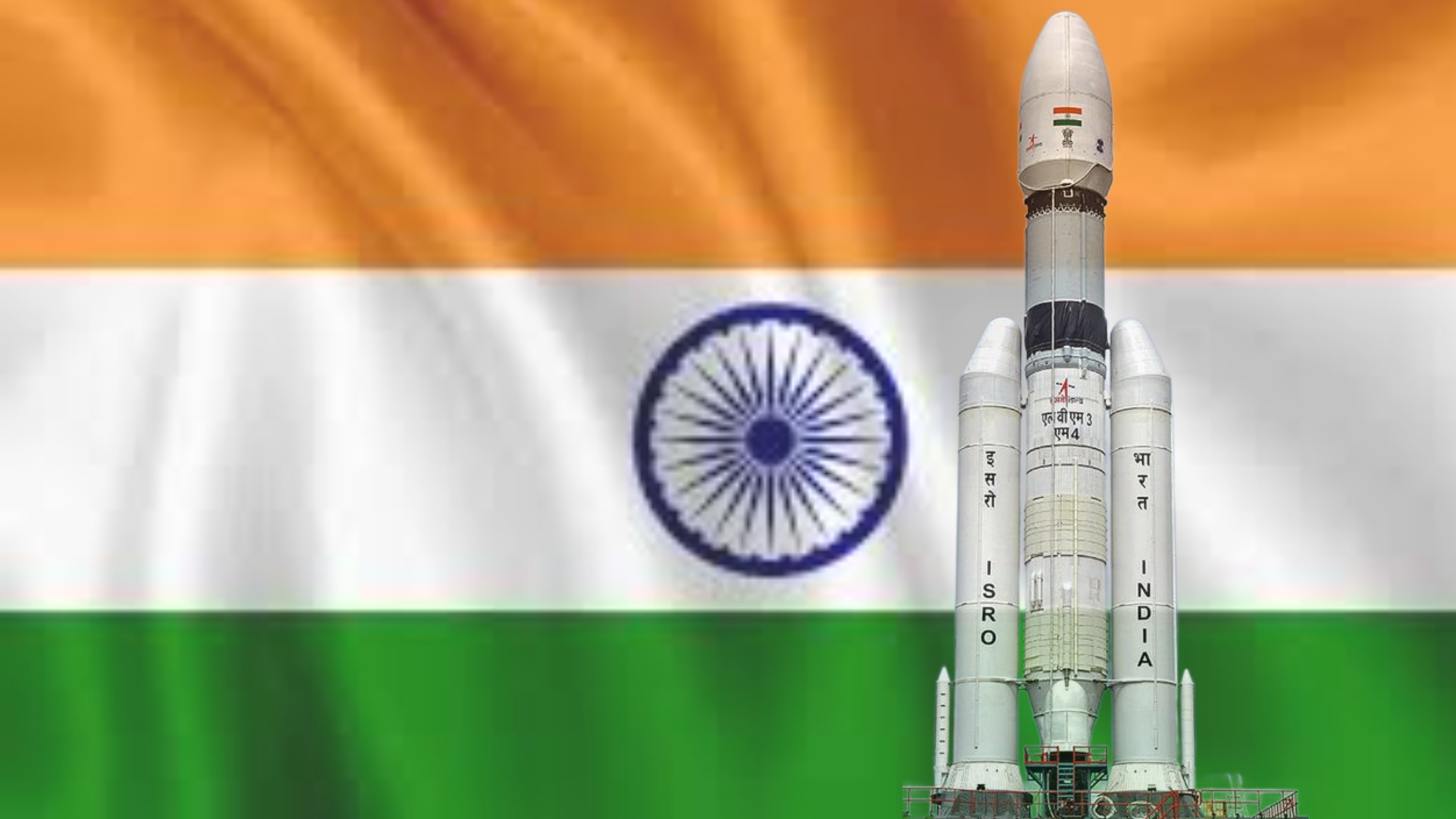India’s Chandrayaan-3 mission, launched by ISRO in July 2023, has become a landmark achievement in the global space race, showcasing the nation’s growing expertise in space science and technology. As India’s third lunar exploration endeavor, Chandrayaan-3 builds on the successes and lessons of Chandrayaan-1, which discovered water on the Moon, and Chandrayaan-2, which attempted a soft landing near the lunar South Pole but faced technical issues. Chandrayaan-3 represents a significant step forward, successfully achieving a soft landing near the lunar South Pole—a region of immense scientific interest due to potential water ice deposits. The mission’s scientific goals include studying the composition of lunar soil, mapping the presence of water ice, and conducting detailed analysis of the Moon’s environment. Equipped with advanced instruments such as the Laser-Induced Breakdown Spectroscope (LIBS) and the Pragyan rover, the mission aims to provide groundbreaking data on the Moon’s surface and geology. Chandrayaan-3 also features technological innovations, including an autonomous landing system that allows real-time navigation of hazards, ensuring a successful landing. This mission not only marks India’s technological triumph but also positions it as a key player in global space exploration. Beyond its scientific achievements, Chandrayaan-3 reinforces India’s strategic ambitions in space, paving the way for future missions, including potential manned lunar exploration. It further boosts ISRO’s international reputation for executing cost-effective, high-impact missions, fostering global collaborations, and expanding India’s role in the next frontier of space. As the mission opens up new scientific and geopolitical opportunities, it signifies India’s readiness to play a central role in future lunar exploration and beyond.
Background of Chandrayaan-3
The Chandrayaan-3 mission followed the successful Chandrayaan-1 mission (2008), which discovered water molecules on the Moon, and Chandrayaan-2 (2019), which deployed a lunar orbiter. However, the Chandrayaan-2 lander, Vikram, faced challenges during its descent, leading to an unsuccessful landing. Despite this, the orbiter continues to function, sending critical data from the Moon.
Chandrayaan-3, designed specifically as a lander mission, sought to build on these earlier efforts by achieving a successful soft landing on the lunar surface, particularly in the challenging south polar region. It aimed to demonstrate India’s capability to land on the Moon, collect data from the lunar surface, and enhance scientific understanding of the Moon’s composition and environment.
Scientific Goals of Chandrayaan-3
The Chandrayaan-3 mission was developed with several key scientific objectives in mind:
- Lunar Surface Exploration: One of the primary goals of Chandrayaan-3 was to study the lunar surface, particularly in the Moon’s south pole region, which had never been extensively explored before. This region is of great interest due to its potential for harboring water ice in permanently shadowed craters.
- Understanding Lunar Geology: The lander and rover were equipped with scientific instruments designed to analyze the chemical and mineral composition of the lunar surface. By studying the soil and rocks, scientists aimed to gain a deeper understanding of the Moon’s geological history and processes.
- Mapping the Moon’s Resources: Another objective of Chandrayaan-3 was to gather data that could help identify potential resources on the Moon, such as water ice and other materials, which could play a crucial role in future lunar colonization efforts and deep-space missions.
- Solar Wind and Lunar Magnetism: Chandrayaan-3 also aimed to study the interaction of the solar wind with the Moon’s surface and assess the Moon’s magnetic properties, providing insights into the early history of both the Moon and Earth.
Technological Advancements in Chandrayaan-3
Chandrayaan-3’s success can be attributed to a host of technological advancements. Some of the key innovations and improvements in this mission include:
- Advanced Lander Technology: Learning from the Chandrayaan-2 lander’s crash, the Chandrayaan-3 lander was equipped with improved software and hardware, including more robust landing gear, enhanced navigation systems, and a better altitude control system to ensure a smooth descent and soft landing.
- Autonomous Rover: The Chandrayaan-3 mission featured a highly sophisticated, autonomous lunar rover, designed to explore the Moon’s surface. The rover was tasked with conducting a range of scientific experiments, including spectrometric analysis of the soil and rocks to determine their mineral composition.
- Precision Landing: One of the most challenging aspects of the mission was achieving a precise landing in the difficult terrain of the lunar south pole. The mission’s landing algorithms and real-time decision-making capabilities played a critical role in overcoming the harsh lunar environment.
- Energy Efficiency: The mission’s lander and rover were designed with a focus on energy efficiency, allowing them to operate on limited solar energy for an extended period. This was crucial for maximizing the duration of scientific experiments on the Moon.
Scientific Achievements of Chandrayaan-3
Chandrayaan-3 has already achieved several significant scientific milestones:
- Successful Soft Landing: The primary achievement of Chandrayaan-3 was the successful soft landing on the lunar south pole. This accomplishment made India the fourth country in the world, after the U.S., Russia, and China, to successfully land on the Moon and the first to land near the south pole.
- Lunar Surface Analysis: The data collected by the lander and rover are providing valuable insights into the chemical composition of the lunar surface in the south polar region. Early findings have confirmed the presence of water molecules, and the mission is expected to provide more detailed information on the distribution of water ice in the area.
- Mapping Lunar Resources: Chandrayaan-3 has also contributed to identifying potential resources, such as helium-3 and other minerals, which could be used for future space exploration and energy generation on Earth.
- Technological Demonstration: Beyond scientific achievements, Chandrayaan-3 has demonstrated India’s technical capabilities in space exploration, particularly in achieving a safe landing on a challenging part of the Moon’s surface. This sets the stage for future, more ambitious lunar missions.
Future Prospects for India’s Space Program
The success of Chandrayaan-3 has paved the way for further advancements in India’s space exploration efforts. Some of the future prospects that this mission opens up include:
- Manned Lunar Missions: With the success of Chandrayaan-3, ISRO has gained critical experience in landing on the Moon. This knowledge will be invaluable in future manned missions to the lunar surface, potentially in collaboration with other space agencies like NASA or as part of India’s own ambitions.
- International Collaborations: India’s growing reputation as a spacefaring nation will likely result in increased opportunities for international collaboration. Already, ISRO has cooperated with several space agencies, and this trend is expected to continue, particularly in the fields of lunar exploration and interplanetary missions.
- Deep Space Exploration: Chandrayaan-3 also sets the stage for future deep space exploration missions, including Mars missions and further exploration of the outer planets. ISRO has already demonstrated its capability with the successful Mangalyaan (Mars Orbiter Mission), and Chandrayaan-3 will add to its growing expertise.
- Space Economy and Private Sector Involvement: The success of Chandrayaan-3 will also encourage the private sector in India to invest in space technologies. India’s space economy is expected to grow rapidly, with more startups and private companies playing a role in space exploration and satellite development.
The Chandrayaan-3 mission is a significant milestone for India’s space program, representing both a scientific triumph and a stepping stone for future exploration. The mission’s success in achieving a soft landing near the lunar south pole, conducting critical surface analyses, and advancing space technology cements India’s place among the world’s leading spacefaring nations.
Looking ahead, the future of India’s space program seems brighter than ever, with plans for manned lunar missions, further exploration of the Moon’s resources, and deeper space exploration. Chandrayaan-3 not only adds to India’s growing space legacy but also serves as a testament to its innovative spirit and technological advancement. As the world continues to look to the stars, India is poised to play an increasingly important role in the global space race.

 A.B.M. Abir
A.B.M. Abir 
























